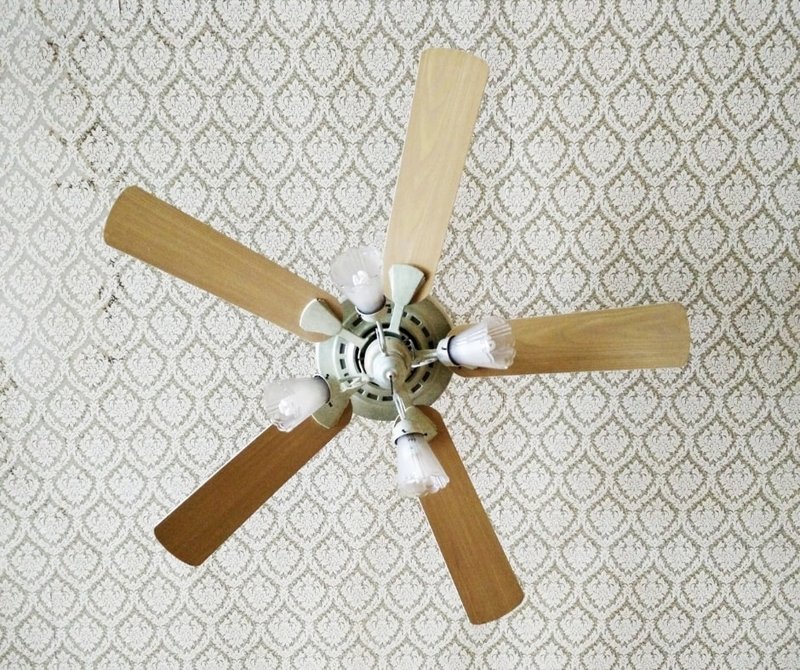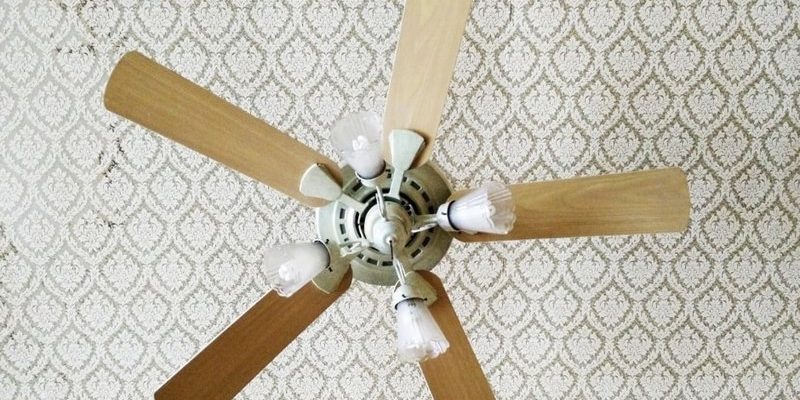
Honestly, these remotes aren’t rocket ships, but they have their quirks. The Westinghouse fan remote usually comes with a handheld transmitter and a receiver tucked away inside the fan unit. When things are working, you can swap fan speeds, turn lights on or off, and stay comfy — all from the couch. But when syncing goes sideways, it’s like losing the remote to your comfort. Let’s dig into what’s happening, why things break down, and how you can regain control (pun intended).
How Westinghouse Ceiling Fan Remotes Sync
Before grabbing a screwdriver, let’s walk through how these remotes actually sync. It’s not magic, but it *can* feel mysterious if you’ve never peeked inside the process. Basically, the remote uses a set of *codes* to talk to the receiver inside the fan. These codes are like secret handshakes — both devices need to agree before anything works.
The default pairing process usually involves setting matching DIP switches or pressing a “pair” button, depending on your particular Westinghouse model. Some older models use tiny slider switches inside the battery compartment, while newer ones often skip those in favor of pressing and holding remote buttons. When you perform the right steps, the fan and remote sync up, and the codes match. If something goes wrong in this dance, you’ll run into control problems.
Here’s the thing — any little break in this process (dead batteries, power cuts, radio interference) can force the devices out of sync. That’s why you sometimes need to re-pair them, especially after moving, cleaning, or power outages. Understanding the syncing mechanism is the first step to fixing it when things go wonky.
Common Reasons Why Your Westinghouse Fan Remote Won’t Sync
Sometimes, the issue is painfully simple. Other times, it’s a bit more head-scratching. If your Westinghouse ceiling fan remote won’t sync, it’s usually due to one of these culprits:
- Dead or old batteries: If the remote’s batteries are weak or dead, that signal doesn’t make it far. Swapping in fresh ones is a basic (but surprisingly effective) first move.
- Wrong code settings: If you have a model with DIP switches, the remote and receiver must have identical code patterns. One switch out of place and it won’t work.
- Receiver power issues: If the fan’s receiver isn’t getting power (maybe a breaker tripped, or the wiring is loose), pairing can’t happen.
- Radio frequency interference: Sometimes, Wi-Fi routers, garage door openers, or even thick walls can mess up the signal.
You might be wondering, “How do I know which one is messing things up?” Honestly, it’s best to check the basics first — batteries and code settings — before blaming something more complex.
Step-by-Step: How To Troubleshoot Westinghouse Remote Sync Problems
Let me walk you through a slow, methodical way to get your remote and fan chatting again. Don’t rush this; these steps build on each other and help rule things out.
Step 1: Replace the Batteries
Crack open your Westinghouse remote. Take out the old batteries. Pop in fresh ones. Make sure they’re inserted the right way. This step alone fixes more remotes than you’d think.
Step 2: Check the Code Switches
If your remote uses DIP switches (tiny white switches, usually inside the battery compartment), remove the battery and take a clear look. You should see a row of switches, like little levers. Find the receiver module inside your fan canopy (you’ll need a ladder and maybe a screwdriver). Make sure both sets of switches match exactly. If even one is different, set both to the same pattern.
Step 3: Reset and Resync the Remote
Some Westinghouse remotes have a *pair* or *learn* button inside. If so, turn the power off to the fan at the breaker, wait 30 seconds, turn it back on, and then, within 30 seconds, hold the pair or power button on the remote for about 10 seconds. You should hear a click or see the fan lights blink if it works.
Step 4: Double-Check the Receiver Power
If you aren’t getting any reaction at all (fan or light), your receiver may not be getting power. Make sure the wall switch is ON, breakers aren’t tripped, and wires are firmly connected. If you’re not comfortable with wiring, call a pro for this part.
Resetting Your Westinghouse Ceiling Fan Remote
Resetting is like giving your remote and fan a fresh start. Sometimes, codes or memory get scrambled, especially after power surges. If your remote still won’t sync after all the above, a reset is worth trying.
Most newer Westinghouse fans with remotes have a *reset* or *pair* function. Here’s a typical process:
- Turn off the fan’s power at the breaker for about a minute.
- Restore power and quickly press and hold the main ON/OFF or “pair” button on the remote for 10-15 seconds.
- The fan or lights should blink or beep — that’s the signal the reset worked.
Tip: If you have an older Westinghouse unit without a reset button, matching the DIP switches on both the remote and receiver will also “reset” the pairing.
If you don’t see any response (no blinking, beeping, or movement), double-check that the receiver is getting power, and repeat the steps. Sometimes you need to be quick right after restoring power for the remote to sync.
How to Find and Match Remote Codes in Westinghouse Fans
When you’re staring at those tiny DIP switches, it can feel like solving a mini puzzle. These switches are what set your fan’s *code*, ensuring your neighbor’s remote doesn’t accidentally control your fan.
Here’s how you match them:
- Unscrew the fan’s canopy and locate the *receiver*—a small, black box wired to the fan.
- Check the side of the receiver for a row of DIP switches.
- Open your remote’s battery compartment for its own set of switches.
- Set each switch in the same pattern (up or down) on both the remote and the receiver.
If you’ve lost your instruction manual, don’t sweat it. The switches on both devices only need to match. The exact pattern doesn’t matter, as long as both halves are identical.
Matching codes is like setting a secret PIN for your remote. If you ever buy a universal remote, you’ll need to match the codes the same way.
Comparing Westinghouse, Universal, and Replacement Remotes
You might be asking, “If I can’t get this remote to sync, can I just buy a new one?” Here’s where things get interesting. Original Westinghouse remotes are designed for your model, which makes pairing easier. But universal remotes and third-party replacements are out there, too.
- Original remotes: Easiest to pair, and guaranteed to support all your fan’s features. If your current one is lost or broken, look up the fan’s model number and order a direct replacement.
- Universal remotes: These are supposed to work across many brands. They usually have their own set of DIP switches and may include extra features (timers, dimming, etc.). You’ll need to match the code settings to your fan’s receiver, just like the original.
- Third-party replacements: These can be hit-or-miss. Double-check compatibility before buying. Sometimes, a remote meant for a similar fan will pair up just fine, as long as the frequencies and code options match.
If you’re tired of fighting with remotes, some folks swap to a smart wall control or app-based system, but that’s a bigger upgrade.
When to Replace the Receiver or Seek Help
If you’ve run through these steps, tried fresh batteries, re-checked the codes, and even reset everything, but your Westinghouse ceiling fan remote still won’t sync, you might have a deeper problem. The most likely culprit? The *receiver* inside the fan.
Receivers can fail over time, especially after power surges, extreme heat, or just plain old age. If you’re getting no response at all — and you’ve ruled out wiring or breaker issues — it’s possible the receiver needs replacing. The good news? Replacement receivers are available online, and they’re usually plug-and-play for most Westinghouse fans. It’s a bit of a project, but with basic DIY skills, it’s doable.
Here’s the thing: if you’re not comfortable with wiring or heights, don’t risk it. A licensed electrician can swap the receiver quickly and safely. It’ll cost a bit more, but your peace of mind is worth it.
Sometimes, there’s just no “quick fix,” and you need a fresh start with a new receiver or remote. Don’t beat yourself up — even pros run into stubborn sync issues.
Preventing Future Westinghouse Remote Sync Issues
Now that you’ve been through the wringer with your Westinghouse fan remote, let’s make sure it doesn’t happen again soon. A bit of preventative care can save you headaches later.
- Replace batteries yearly: Don’t wait for the remote to start acting up. A fresh set every year is cheap insurance.
- Keep remotes dry and clean: Moisture or sticky residue can mess with buttons or contacts inside.
- Label your code pattern: Jot down the DIP switch pattern on a sticker inside the battery cover. If it ever changes, you’ll have a reference.
- Minimize power surges: Use surge protectors or have an electrician check your home’s wiring if you get frequent outages.
In the end, dealing with a Westinghouse ceiling fan remote that won’t sync is no fun, but it’s rarely the end of the world. Take it one step at a time, double-check the basics, and remember: almost everyone has fought with a stubborn remote at some point. With a little patience (and maybe a ladder), you’ll have your fan and remote back in harmony — and your cool breeze restored — before you know it.
